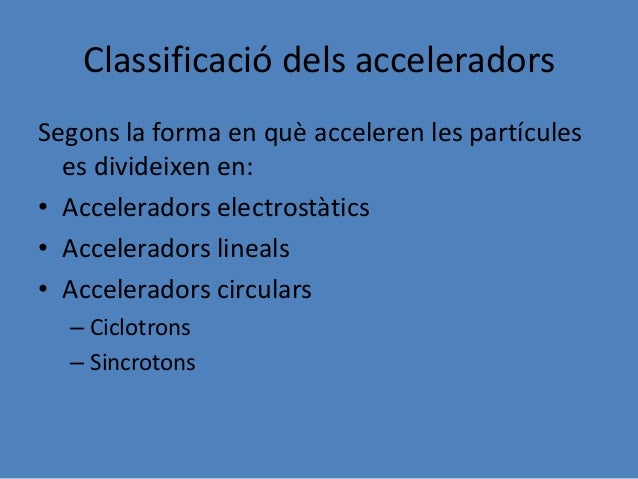
Accelerator particles generator#
Two examples of these instruments are the Cockcroft–Walton generator and the Van de Graaff generator. Electrostatic accelerators use static electric fields to accelerate particles. There are two basic classes of accelerators: electrostatic and electrodynamic accelerators.
Accelerator particles free#
The vacuum is crucial to maintain an air and dust free environment and allow to the beam to travel undisturbed. The beam of particles travels inside a vacuum in a metal beam pipe. Particle accelerators use electric fields to speed up and increase the energy of a beam of particles, which are steered and focused by magnetic fields. It has been necessary to reach the tens of TeV (1012 eV) to validate the Standard Model discovering the Higgs boson and to explore new theories beyond the Standard Model. Many of the most interesting particles are so heavy that collision energies of many GeV are needed to create them.

The famous E=mc2 relationship governs the collisions in particle accelerators: an energy E is required to produce a particle of mass m. Moreover, most of the objects of interest to elementary particle physics do not exist as free particles in nature they have to be created artificially in the laboratory. To examine the fine structure of the basic constituents of matter requires energies generally exceeding 1 GeV (109 eV). At the scale of the nucleus, energies in the MeV (106 eV) range are needed. An electron volt is the energy that a particle acquires when it is accelerated across a potential difference of one volt. To examine matter at the scale of an atom, ~10-10 m, the energies required are in the range of a thousand electron volts. Finally, particle accelerators play an important role in national security, including cargo inspection, stockpile stewardship and materials characterization. For example, they are used for medical diagnoses for creating tumor-destroying beams of particles for killing bacteria to prevent food-borne illnesses to develop better materials for the manufacturing of computer chips. Today, accelerators are widespread and performing a variety of tasks. In addition, condensed matter at extremely high temperatures and densities, such as might have occurred in the first moments of the Big Bang.Īccording to Stephen Hawking, we could define particle accelerators as the closest things we have to time machines. Moreover, nuclear physicists and cosmologists may use beams of bare atomic nuclei, stripped of electrons, to investigate the structure, interactions and properties of the nuclei themselves. Thanks to particle accelerators, a deep understanding of the fundamental particles and physical laws that govern matter, energy, space and time has been possible.

From the mid-1950s, large accelerators were built and began to produce the “new” heaviest particles. In this way, particle physics or high-energy physics was born. In 1932, positrons were discovered studying cosmic rays, followed by muons and pions and more other elementary particles. Electrons and protons were respectively discovered by Thomson and Rutherford in 1897 and in 1919. A particle accelerator is a machine that accelerates elementary particles, such as electrons or protons, to very high energies.


 0 kommentar(er)
0 kommentar(er)
